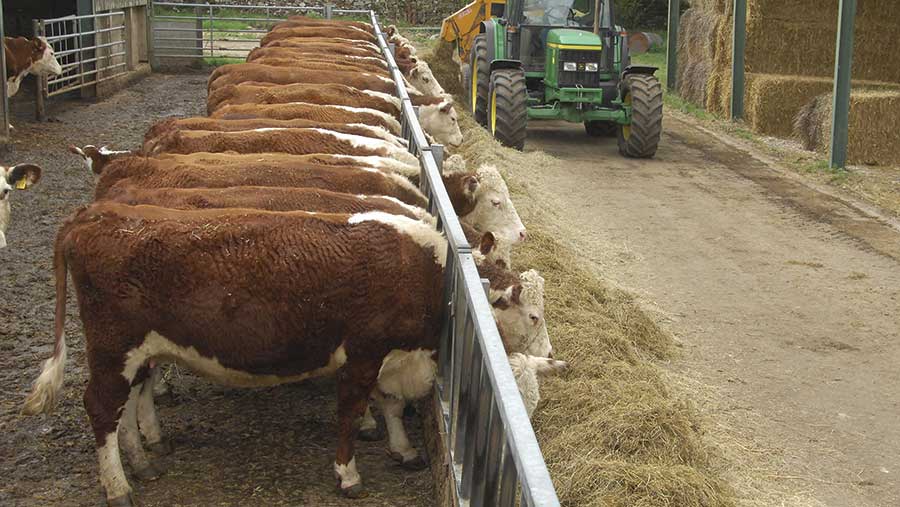Outlook 2016: Profitable beef production a challenge
 © John Eveson/FLPA/Rex Shutterstock
© John Eveson/FLPA/Rex Shutterstock A moderate increase in prime cattle availability is forecast for the year ahead. This, plus the stronger pound, could put pressure on prices.
However, low cereal prices, the abundance of straw and forage and cheaper fertiliser and fuel should reduce production costs to some degree, says Andersons farm business consultant Jack Frater.
“While prices in 2015 showed some improvement on the low levels of 2014, values for prime cattle could well remain at £3.30-£3.60/kg deadweight,” he predicts.
Political unrest and weak European economic prospects look set to keep sterling strong, causing problems for UK exporters. June 2015 figures showed a 20% drop in total exports on the year, while Irish beef has undercut the UK market by as much as 50p/kg.
Beef business pointers
- Improve grassland management
- Be aware of and monitor power costs for moving straw/muck and feeding
- Address suckler herd fertility (average is only 85-90%)
- Finish animals as efficiently as possible to correct market specification
See also: Stocktake results show top livestock businesses fail to make profit
The store cattle trade has remained remarkably firm. That is good news for those keeping suckler cows, but the disconnection between store and finished prices is putting pressure on already tight finishing margins. “This raises questions about how sustainable store cattle prices are without a lift in the prime cattle price,” says Mr Frater.
The latest AHDB Stocktake report showed top-third suckler cow herds still producing negative margins after all costs, including family labour. However, top third beef store and finishing enterprises made a positive margin.
In any analysis of net margins the key driver is fixed costs, with top-quartile producers consistently having lower fixed costs than the average, adds Mr Frater.
“With suckler herds, in particular, the pressure to reduce fixed costs is mounting. Those housing cows for long periods have to purchase and/or move large quantities of bedding straw and muck and rely on round-bale silage.
“Alternatives such as outwintering, making better use of grass to extend the grazing season and even strip grazing forage crops can help.”
